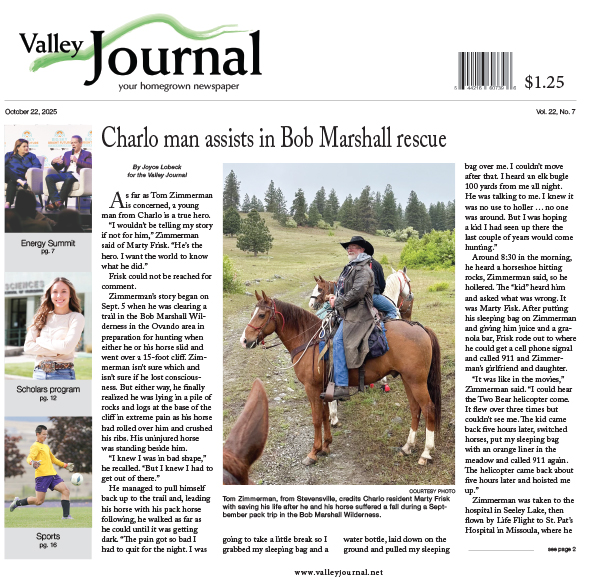Officials debate finer details of compact ahead of deadline

Megan Strickland
Open air canals could become a thing of the past in some areas of the Flathead Indian Irrigation Project if the Confederated Salish and Kootenai Water Compact is passed.

Megan Strickland
Open air canals could become a thing of the past in some areas of the Flathead Indian Irrigation Project if the Confederated Salish and Kootenai Water Compact is passed.
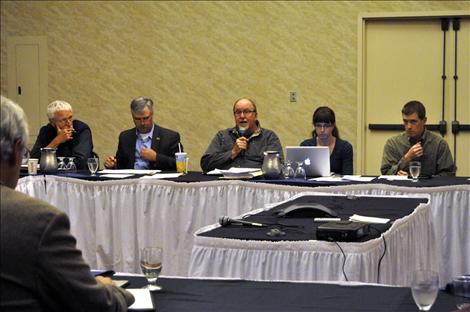
Megan Strickland
Montana Reserve Water Rights Compact Commission Chairman Chris Tweeten negotiates with leaders of the Confederated Salish and Kootenai Tribes.
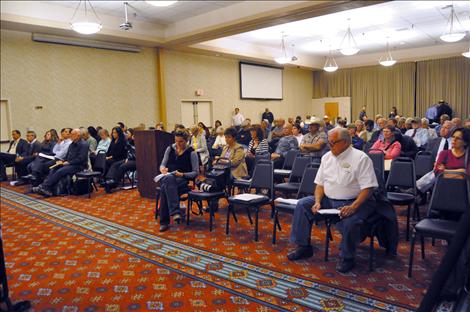
Megan Strickland
A crowd attended the negotiating session held Oct. 17 in Polson.
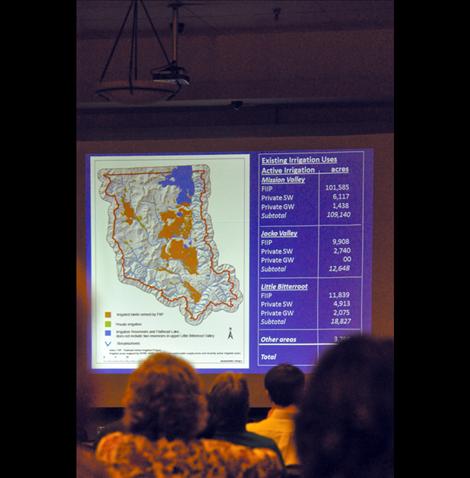
Megan Strickland
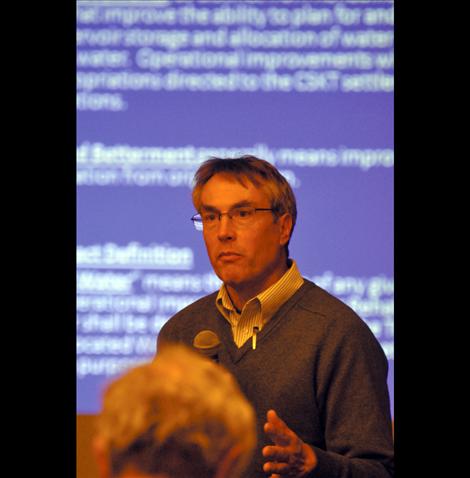
Megan Strickland
Tribal Hydrologist Seth Makepeace gives a presentation on the proposed Confederated Salish and Kootenai Water Compact at a negotiating session in Polson.
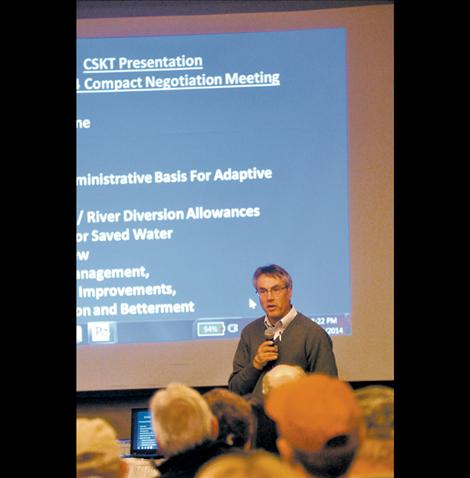
Megan Strickland
Tribal Hydrologist Seth Makepeace gives a presentation on the proposed Confederated Salish and Kootenai Water Compact at a negotiating session in Polson.
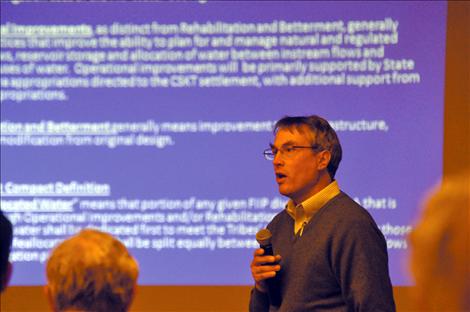
Megan Strickland
Tribal Hydrologist Seth Makepeace gives a presentation on the proposed Confederated Salish and Kootenai Water Compact at a negotiating session in Polson.

Megan Strickland
Tribal Hydrologist Seth Makepeace gives a presentation on the proposed Confederated Salish and Kootenai Water Compact at a negotiating session in Polson.
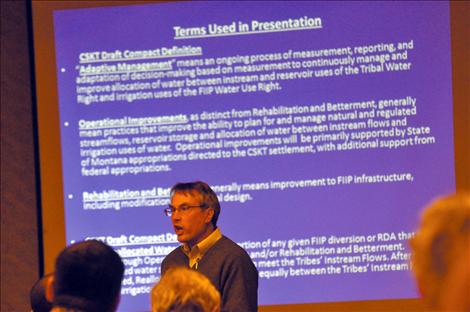
Megan Strickland
Tribal Hydrologist Seth Makepeace gives a presentation on the proposed Confederated Salish and Kootenai Water Compact at a negotiating session in Polson.
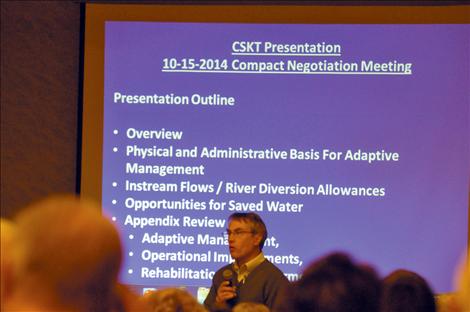
Megan Strickland
Tribal Hydrologist Seth Makepeace gives a presentation on the proposed Confederated Salish and Kootenai Water Compact at a negotiating session in Polson.
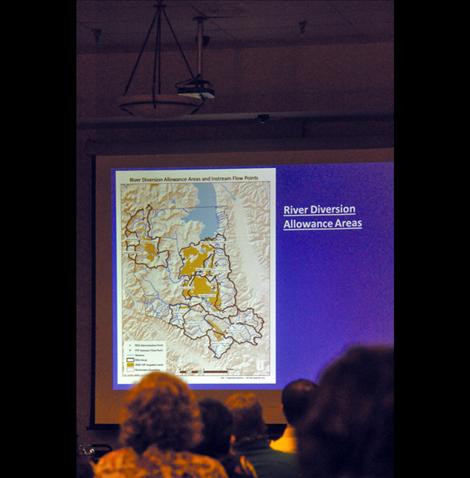
Megan Strickland
Issue Date: 10/22/2014
Last Updated: 10/21/2014 4:54:48 PM |
By
Megan Strickland
Keep Reading!
You’ve reached the limit of 3 free articles - but don’t let that stop you.















